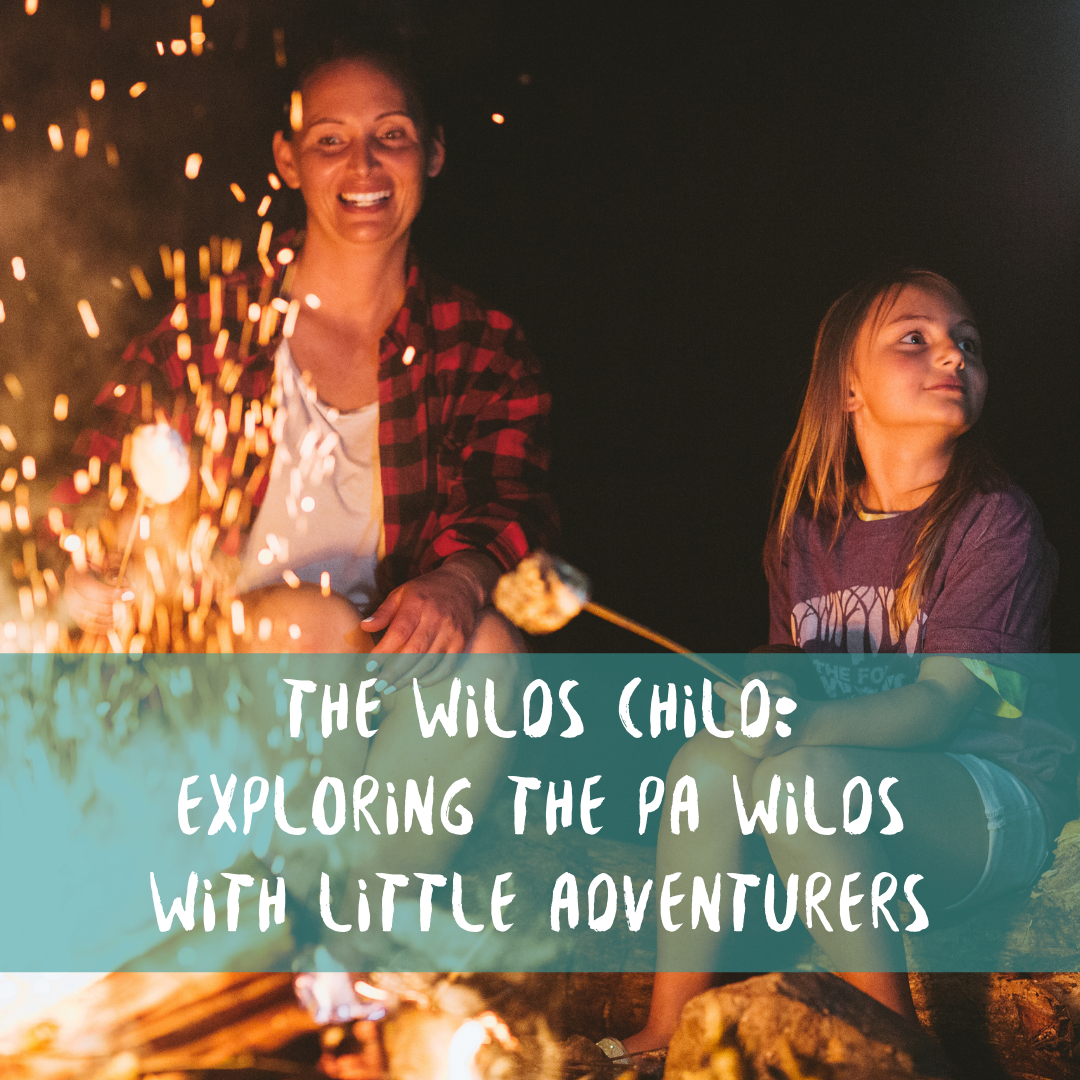Wilds Child: The Wildlife Center at Sinnemahoning State Park
What is the elevation of your home habitat?
Any guesses? No? Okay, try this question: How many inches of precipitation does your home habitat receive annually?
Still too tricky?
Which direction does your morning window face? If your morning window faces east – or if you have indoor plants and pay closer attention to the position of the sun more than the average person – perhaps this question is a little easier for you to answer. Let’s up the ante: how does the sunrise vary throughout the year. Have you ever stopped to notice its early rise in winter or late summer slumber?
What’s the basic geology of your home habitat? Has your backyard, for example, been shaped by glaciers or erosion? What minerals are commonly extracted from the ground beneath your feet?
These are just a series of questions posed by outdoorsman and conservationist Steven Rinella in his latest book, Outdoor Kids in an Inside World (2022), in an effort to get folks to think more consciously and consistently about the natural world that surrounds all humans. “Don’t be intimidated or feel ashamed if you don’t know the answers,” Rinella writes. “[These questions] are meant to get you thinking and learning about the natural environment surrounding your particular neck of the woods.”
It reminds me of a post I saw floating around social media not long after my first son was born. Leaves and Logos (pictured below) asks viewers to name a series of global brands based solely on their logos – the iconic Apple apple, McDonald’s golden arches, Nike’s simple swoosh. Viewers are then asked to identify trees by viewing only silhouettes of their leaves.
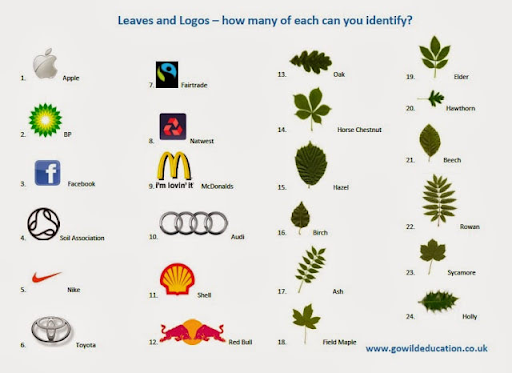
I remember viewing the post as a young mother and quickly feeling dumbfounded – and then ashamed. Apart from maple – which I likely knew only because of its presence on the Canadian flag and bottles of maple syrup – I couldn’t name a single leaf.
Up until that point, I likely would have called myself an outdoorswoman. At the very least, I would have waxed poetic about my love of nature. But I had been walking past forests of large trees and through piles of discarded leaves for years without ever bothering to stop and learn more about them.
I glanced down at the face of my infant son sleeping in my arms and felt another pang of sadness. How could I teach him more about the environment around us if I didn’t even know myself?
In the time since then, I’ve made sure I can identify leaf silhouettes. I also know the names of all the common birds that visit our feeders, where to expect certain constellations in the night sky depending on the season, and the source of the water that pours from my tap on command (in my case, it is a reservoir and I’ve taken my sons to view it numerous times, all with the mission of teaching them not to take that vast, green lake and the sustainability it promises for granted).
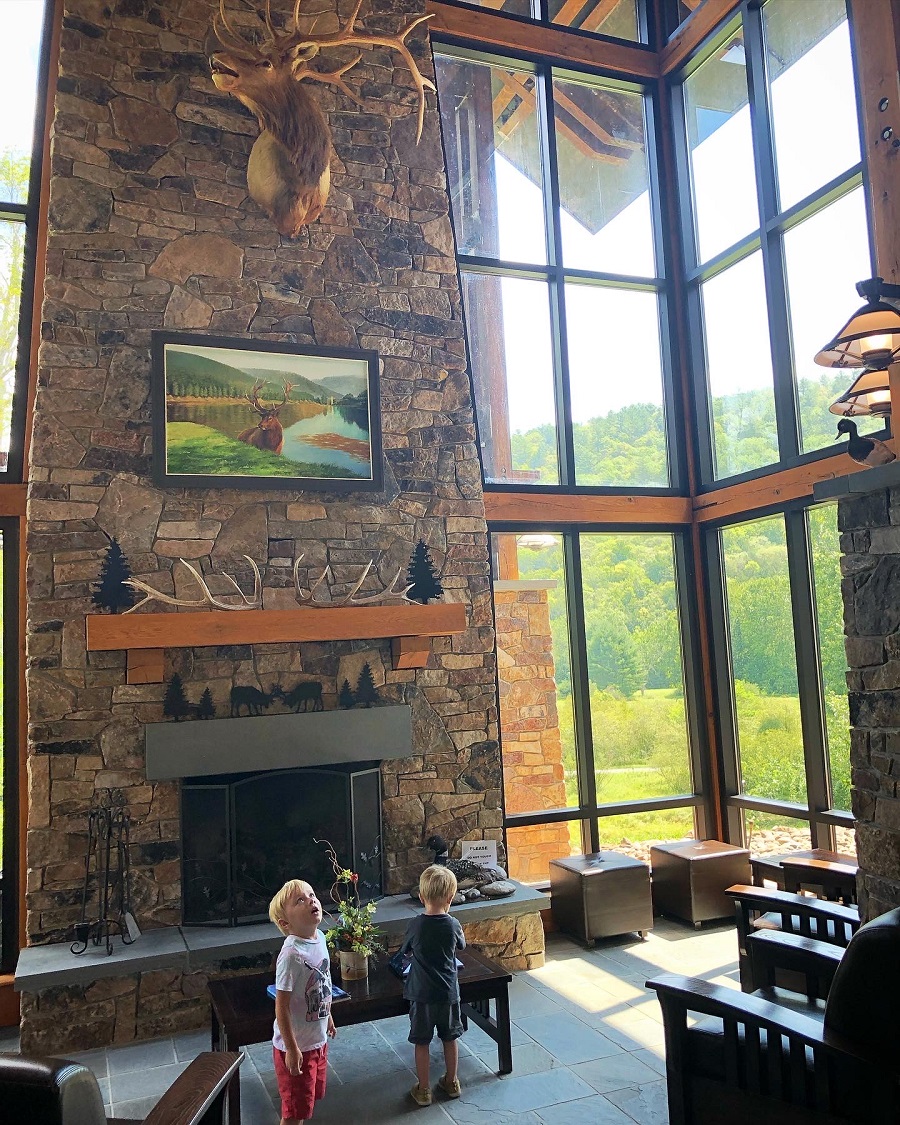
But I can teach all of those things to my sons because I made the effort to learn, consciously committing to knowing more and not just assuming that my proximity to nature confers wisdom. And I also concede that that work is not even close to being finished, which is why we love to travel to local nature and wilderness centers so that we both can learn more. When the centers are as exceptional as the ones in the PA Wilds, that learning is easier than ever.
A few miles off of the Elk Scenic Drive and nestled between Elk State Forest and the Susquehannock State Forest, Sinnemahoning State Park is an off-the-beaten path destination worthy of your next hiking, camping, or picnicking adventure and full of opportunities to learn about the natural world that surrounds us.
But if that’s not enough motivation to make the drive, its nature center certainly is. The Sinnemahoning State Park office houses a state-of-the-art Wildlife Center full of interactive exhibits that even – or maybe especially – your youngest children will enjoy.
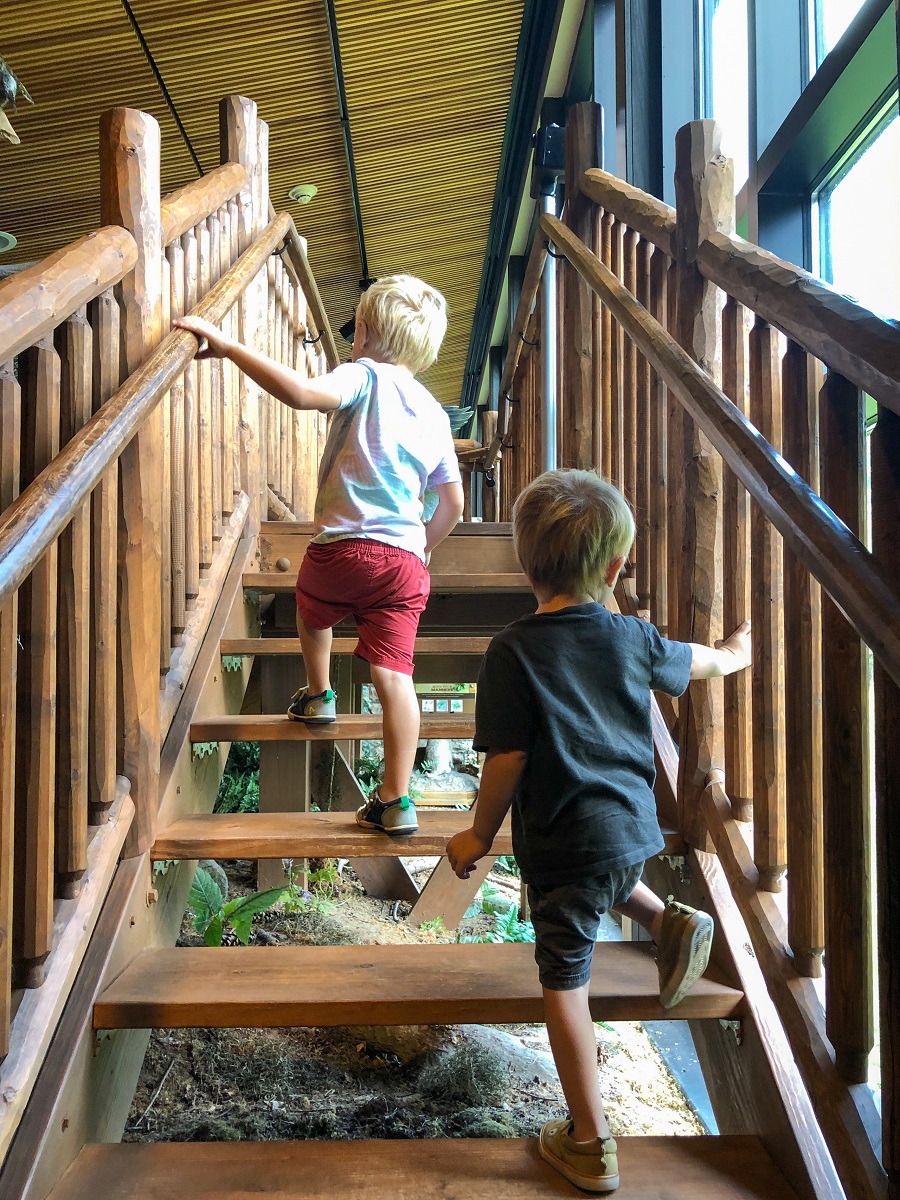
It is worth pausing to mention that children learn best when engaged in play. Anyone who has attempted to have a child sit through an adult lecture knows this. While adults can be motivated by the promise of knowledge itself (or by feeling embarrassed because they know an Audi logo better than a beech leaf), children’s motivation to learn and capacity to master concepts is often rooted in an interest that results from play. So when we arrived at the Wildlife Center and saw all the exhibits designed to teach children about the local ecology through hands-on interaction, I knew we were in the right place.
The center’s main exhibit consists of a crawl-through tunnel that creeps beneath a habitat display full of local trees, plants, and animals. Without instruction, my boys immediately spotted the tunnel, dropped to their hands and knees, and began to explore. This kind of work is, truly, second nature to children. In the tunnel they spotted some of the critters likely found in these habitats, including a model of a mother bobcat and her two young cubs.
“It’s us!” my oldest shouted, delighted, as he looked at the family of North American lynx. “The mommy, James, and Alex bobcat!”
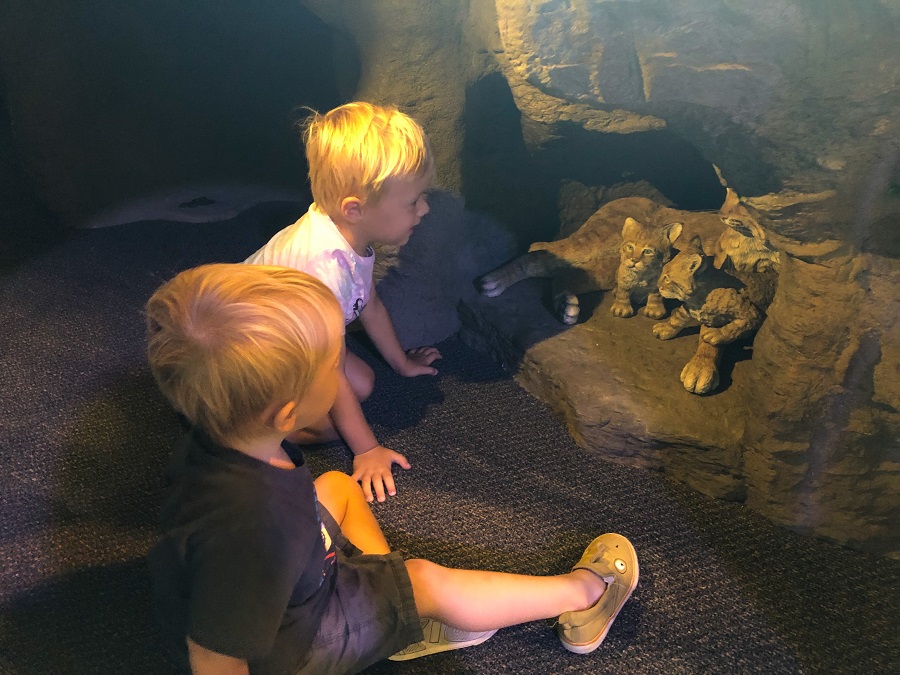
“Mommy, come!” my toddler instructed firmly, but I demurred. “I can see from here,” I smiled, peeking into the tunnel. “I wonder what else is in here!”
The truth is, apart from not necessarily wanting to crawl around the floor, I also knew that tunnel play was something my boys were not only capable of doing on their own, but perhaps that it was essential they make this journey solo. Indeed, they crawled in and out of the tunnel literally dozens of times, looking for more creatures and remarking on the ones that stood on the ground above their heads.
I watched them from a distance, taking in the displays at my own quiet pace, and marveled at the things they were able to teach themselves and each other simply by exploring. It was hands-on learning at its near-finest, perhaps even better than the real thing since no actual bobcat dens were required.
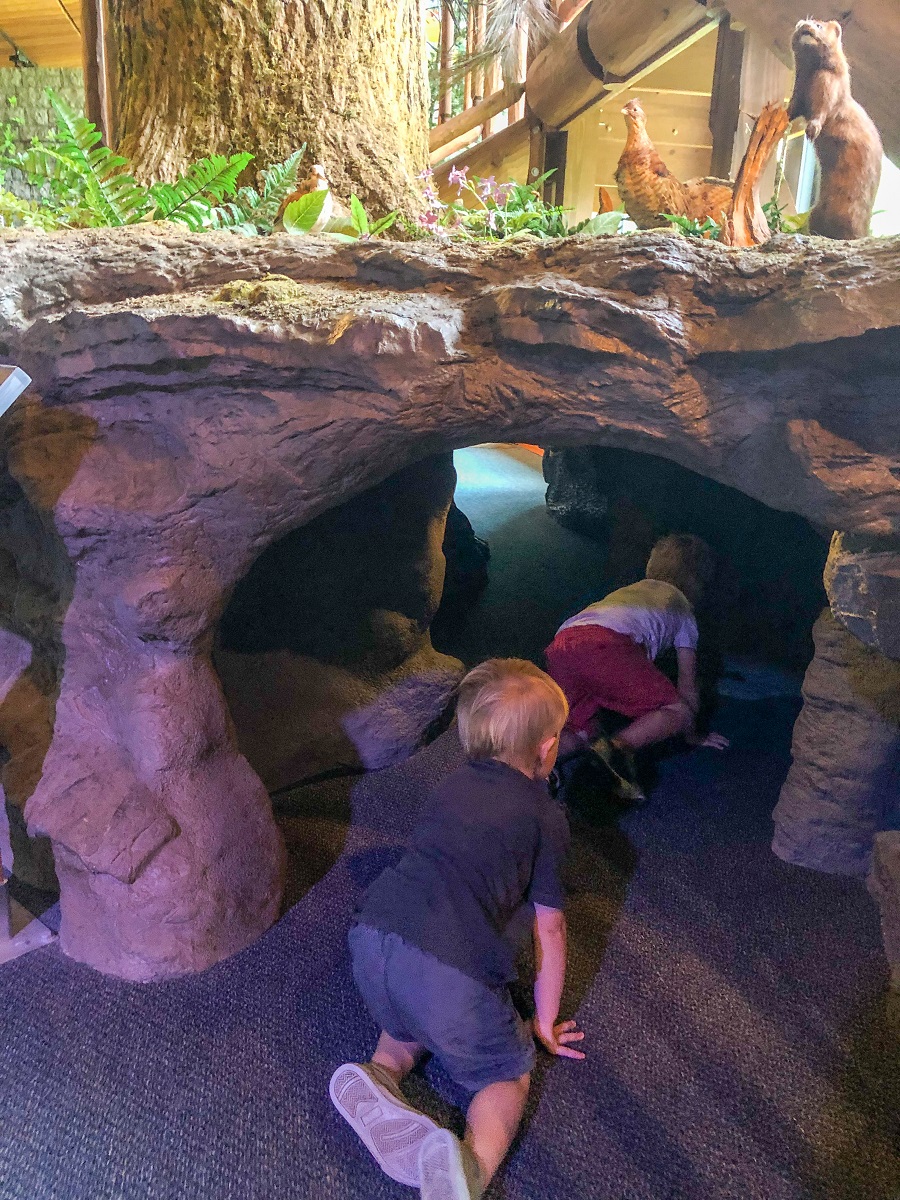
With the ecology down pat, my children next sought to learn about the local lumber history of the region by climbing the wide, log-beamed stairs that carried them along a wide scenic viewing window into the upper limbs of the display tree. “An eagle’s nest!” my oldest called, staring at the eggs inside.
Next it was time for the large, topographic map display that ran the length of the lobby, showing the peaks and canyons of the First Fork Valley and its connection to the larger PA Wilds landscape around it. Sinnemahoning genuinely is the heart of the PA Wilds, and to see it laid out, literally, on a large table as an exhibit that is nearly a toy itself was an important learning experience. Children can run their hands over the display to physically feel the contours of the natural world around us, and it opened us up to many conversations about the geology of our home habitat. Steven Rinella would have been proud.
When we were finally finished exploring the inside of the center – and believe me, that took a while (those kids really love tunnels) – we walked around outside in forests and meadows around the Wildlife Center before settling down to lunch beneath a map of the western stretch of the PA Wilds.
“What’s this, mommy?” my oldest asked, staring up at the map thoughtfully while nibbling his peanut butter sandwich.
“It’s a map,” I explained. “It shows us where we are in relation to other things around us.” I raised my finger and planted it on a picture of a bear beneath the word “Sinnemahoning.” “We are here.” I raised my finger again. “Here is where we came from.” I pointed to Ridgway. I then traced the long, winding routes that carried us to the center. “Here’s how we got here.”
The boys were enraptured. Next I found some of our favorite spots and pointed them out too.
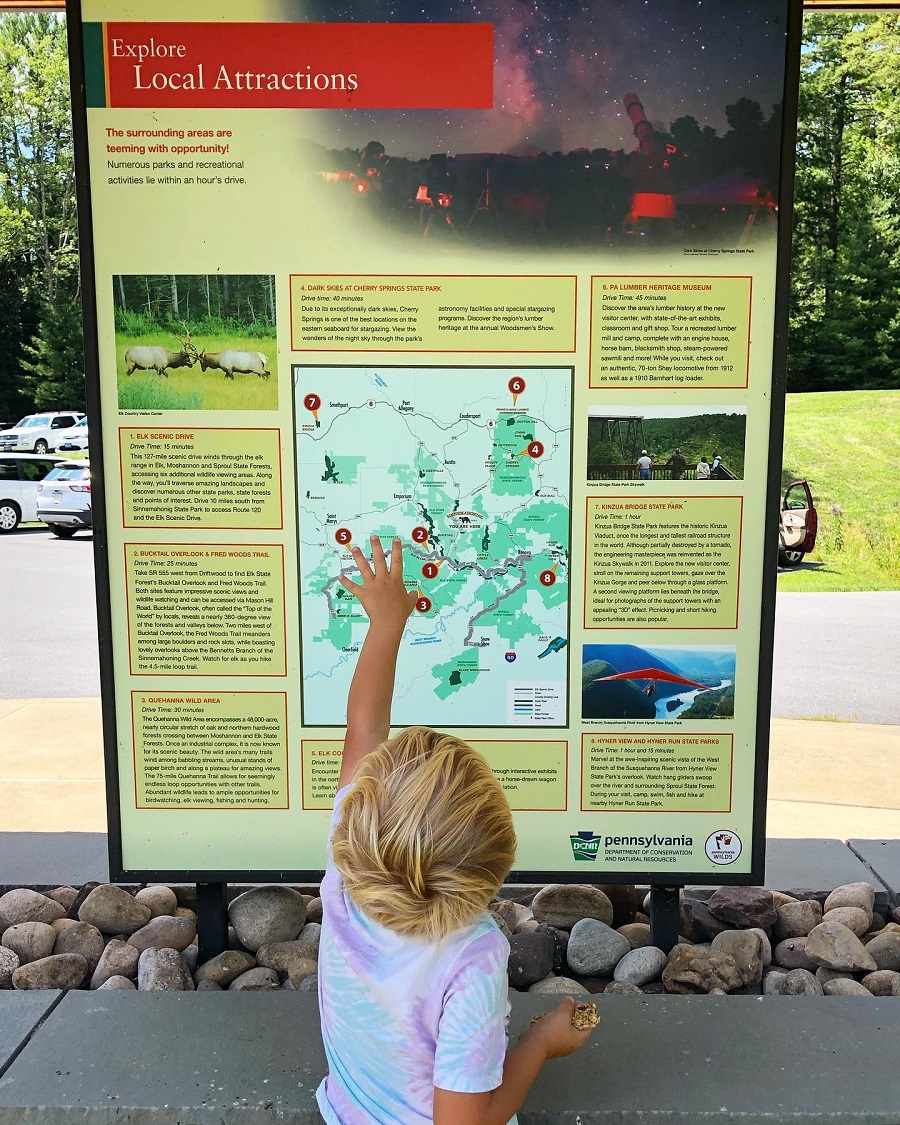
“Here’s the Kinzua Bridge,” I said. “Remember the big overlook with the cool train playground?” I saw my sons’ eyes widen in remembrance. “Here is Parker Dam, where we swim. Here is Quehanna where we walk. Here is Cherry Springs where we go to see the stars.”
My oldest began to point too. “All of this is ours? It’s where we live?” he asked, astonished.
I smiled. “Yes, it’s home.”
I don’t beat myself up too badly about not knowing animal tracks or leaf silhouettes anymore, though I make sure to consciously remind myself of the ways that we are tricked into co-conspiring with large corporations in their attempt to make their vision of the world a reality. BP’s helios logo in shades of green may try to coax me into believing in their version of green energy, for example, but I make sure, for my family, that the sun itself is a far more present symbol of the ways we receive life from the natural world around us.
It’s never too late to learn about the natural world in our backyards and it’s never too early to teach your children – whether that’s putting up a bird feeder and keeping a birding journal, focusing more consciously on the plant life around you by studying wildflowers or even reading stories about your local history, including the native societies that lived here before European contact. Such activities help kids learn by meeting them where they are developmentally and engaging them in hands-on learning. Nature Centers like The Wildlife Center at Sinnemahoning State Park – with their dedication to knowledge through interactive exploration and play – are also another great first place to start.
About the Series:
The Wilds Child: Exploring the PA Wilds with Little Adventurers is a monthly series that features stories, travel tips, landscape recommendations, and the occasional piece of unsolicited parenting advice. Whether you’re a family in town for a visit or a local looking to show their own children your region’s rich heritage, let local writer, community organizer, and fellow-parent, Tia DeShong, help you plan your next adventure in the PA Wilds.
